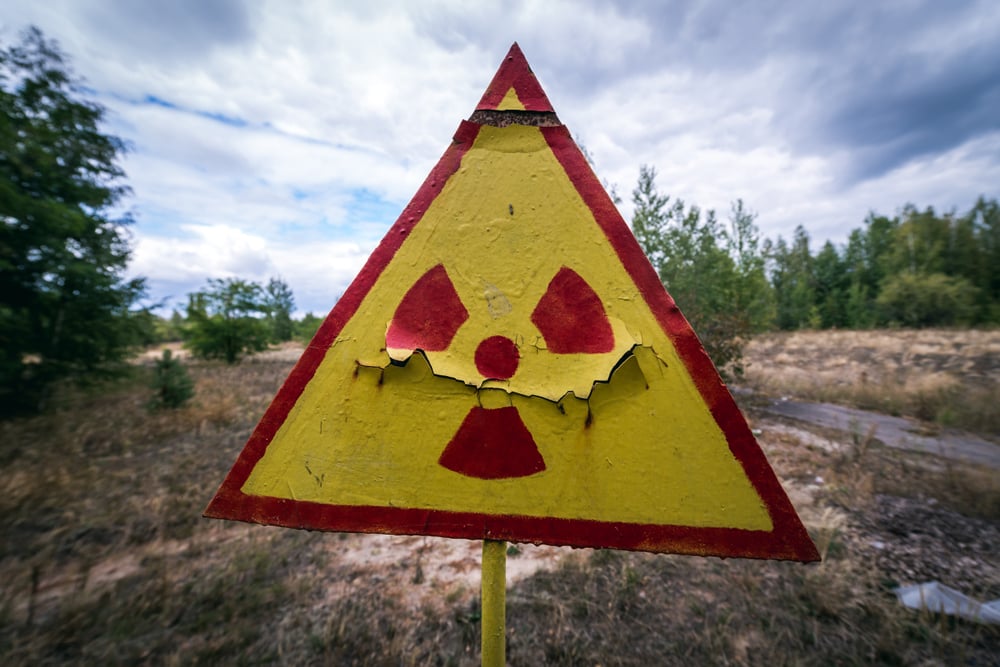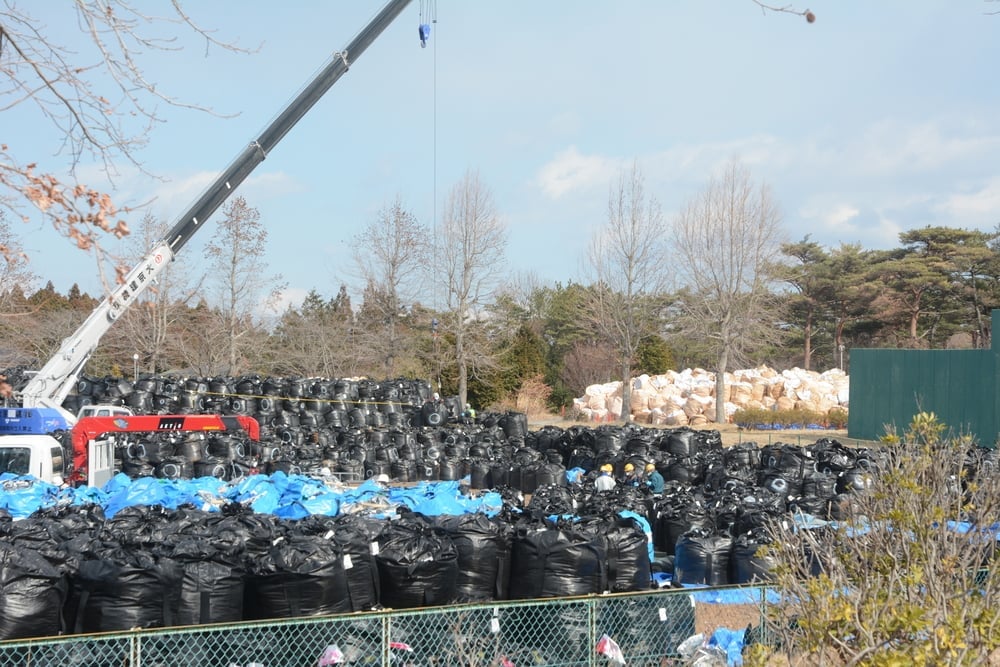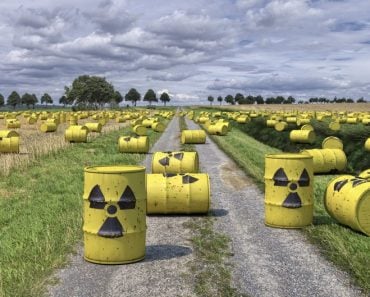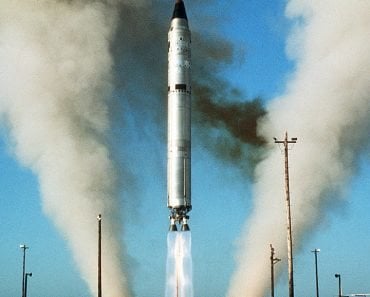Table of Contents (click to expand)
Sunflowers can take up high concentrations of radioactive isotopes and sequester them in stems and leaves, so they have been employed to clean up contaminated sites following nuclear disasters.
As any seasoned gardener will tell you, a zombie apocalypse isn’t the best time to prune your greens or do maintenance work in the front yard. However, if you have ever played Plants vs. Zombies, then you would know that planting zombie-zapping plants in your lawn is the right thing to do if you want to keep the monsters at bay.
“Did you know,” I said to my sister, who was planting digital sunflowers in a mad frenzy, “that sunflowers are the international symbol for nuclear disarmament?” Her gaze, which had been fixed on the screen shifted to my face. “Really? Why?”
“In 1996, when Ukraine became a non-nuclear-weapon state, sunflowers were planted at a missile base in the country to celebrate this monumental occasion. Since then, sunflowers have become a symbol of a world free of nuclear weapons, but that’s not all there is to the story. It has been discovered that planting sunflowers after a nuclear accident may help clean up the contaminated areas, given the appropriate conditions.”
Recommended Video for you:
Phytoremediatiation At Chernobyl
Following the meltdown at the Chernobyl Power Plant in Ukraine, which released over 100 radioactive elements into the environment, sunflowers were planted in droves to pull out the radioactive isotopes from the fallout-impacted sites – an approach based on the principle of phytoremediation, which employs the use of plants to cleanse the environment.

The Chernobyl sunflower project was born in 1994 when a New Jersey-based company planted sunflowers on a floating raft to absorb radioactive isotopes from the water. The test was carried out on a 75 m2 pond located at a distance of 1 km from the Chernobyl reactor.
It was observed that the plants selectively absorbed radiocesium (137Cs) and radiostrontium (90Sr) from the water and results indicated that about 95% of the radionuclides had been cleared out in a span of only ten days. While the majority of 137Cs stayed in the roots, most of the 90Sr had moved to the shoots. The sunflowers didn’t metabolize the radionuclides; they were incinerated and the radioactive waste was disposed of safely.
Cleaning Up With Sunflowers: The Hyperaccumulator
Life arose on Earth when levels of radiation were much higher than they are today. Plants, in response, evolved ways that enabled them to survive in adverse conditions, so it is not surprising that some plants have developed complex systems allowing the uptake and removal of toxic and even radioactive materials.
Sunflowers have the ability to soak up exceedingly large amounts of toxic elements in their tissues, like 137Cs and 90Sr, which were found in the radioactively contaminated sites (soil and ponds) around the power plant. Owing to this enhanced ability of metal uptake, sunflowers are called hyperaccumulators.

Not all plants can survive after absorbing toxins; many can’t stave off the poisoning and perish. However, a sunflower’s huge biomass and its ability to grow rapidly allow it to isolate the contaminants and continue growing.
Certain nuclear isotopes mimic the nutrients that the sunflower would normally absorb from the soil. Cesium, for example, mimics potassium, which is essential for photosynthesis, while strontium parallels calcium’s chemistry, which is needed for the growth and structural development of the plant. While searching for these nutrients, the plant readily uptakes the cesium and strontium that mimic these elements.
Sunflowers are proficient in root-to-shoot translocation of contaminants, i.e., the absorbed radioactive contaminants are concentrated in the plant’s biomass, and are converted into carbon-based forms. The harvestable biomass of the grown-up sunflowers can be disposed of via pyrolysis, a process in which the organic carbon in the plant is burnt, leaving behind radioactive waste. The radioactive waste can be converted into glass by vitrification to be stored safely underground.
There is always a chance of hyperaccumulator plants being ingested by animals or birds, thus causing contamination to spread through the food chain. This is why, typically, sunflowers would be harvested before they start bearing seeds, as the aim is to harvest the biomass that contains the contaminants. Once flowering and seed-production are initiated, the plants do not grow much vegetatively (roots, stems and leaves are known as a plant’s vegetative parts), i.e., the production of harvestable tissue to store the contaminants is much lower.
Sunflowers In Fukushima
For Chernobyl, while the decontamination of water using sunflowers showed favorable results, the soil clean-up was not as effective. Since remediation methods were implemented a few years after the fallout, the radiocesium had already been bound to the soil particles, which hindered its extraction from the soil.
Sunflowers were also planted in Fukushima, Japan after a powerful earthquake triggered a tsunami, which led to a nuclear disaster at the Fukushima Daiichi Nuclear Power Plant in 2013. Efforts to implement phytoremediation using sunflowers here, however, were not deemed successful and had a markedly different outcome than Chernobyl, which could be attributed to Fukushima having used a sunflower variety with no phytoextraction capabilities and cesium fixation in the soil.
This failure had significant implications in terms of highlighting the importance of screening plant types for phytoremediation to be feasible. The plant species selected must tolerant to high concentrations of the contaminant, while accumulating a substantial amount of the target contaminant in its tissues. It should grow rapidly and have a high biomass production capacity. Field mustard, amaranthus and cockscomb are some other plants that have been utilized for phytoremediation.
Since radiation after a nuclear disaster often rests on the top inches of the soil, in order to decontaminate that soil, another method attempted by Japan has been to excavate the nuclear waste from the soil by removing the top layers of the soil where the contaminants have settled. The dug out toxic soil is packed into plastic bags and then stored for off-site disposal. This is a massive undertaking that is not only expensive, but also highly dangerous, as it involves the transport of the contaminated material to a different site, adding risks of secondary contamination.

While the remediation of contaminated sites using sunflowers seems to be a promising approach, there are many variables affecting the extraction of contaminants by the plant. For starters, sunflowers do not have an equal affinity for all metals, which means that sunflowers are not able to completely clean up contaminated sites by themselves, and must be planted with other hyperaccumulators possessing different metal preferences.
Additionally, phytoremediation achieves the best results at sites where the contamination depth is shallow. Other factors, such as the characteristics of the radioactive waste and the target radionuclide concentration in the waste, also influence the process.
Another reason for investigating phytoremediation using sunflowers is that the harvested plant material could be subsequently used to produce energy. Phytoremediation is a time-consuming process, but the time required for decontamination can be made economically productive by utilizing the contaminated biomass of sunflowers to produce biofuel that could, in turn, reduce the cost of remediation.
From lifting people’s spirits to lifting toxicity out from soil and water – sunflowers dazzle with a brilliance that demands to be admired. With its potential to cleanse the environment of the unwanted, the sunflower is no mere flower; the myriad possibilities linked to the plant’s biology have just started to manifest themselves. Research is critical to realizing the future potential associated with the sunflower’s role as a phytoremediator.
References (click to expand)
- Chernobyl Accident 1986 - World Nuclear Association. World Nuclear Association
- Yablokov, A. V., Nesterenko, V. B., & Nesterenko, A. V. (2009, November). Chapter III. Consequences of the Chernobyl Catastrophe for the Environment. Annals of the New York Academy of Sciences. Wiley.
- Steinhauser, G., Brandl, A., & Johnson, T. E. (2014, February). Comparison of the Chernobyl and Fukushima nuclear accidents: A review of the environmental impacts. Science of The Total Environment. Elsevier BV.
- Nedjimi, B. (2021, February 6). Phytoremediation: a sustainable environmental technology for heavy metals decontamination. SN Applied Sciences. Springer Science and Business Media LLC.
- Frequently Asked Chernobyl Questions | IAEA. The International Atomic Energy Agency
- Shaowei, W., Zhaorong, S., Ping, W., Guoliang, W., & Yuqin, D. (2017). Study on Radioactive Contaminated Soil Remediation Technologies and Selection Principles. Proceedings of The 20th Pacific Basin Nuclear Conference. Springer Singapore.
- Wai, K.-M., Krstic, D., Nikezic, D., Lin, T.-H., & Yu, P. K. N. (2020, May 13). External Cesium-137 doses to humans from soil influenced by the Fukushima and Chernobyl nuclear power plants accidents: a comparative study. Scientific Reports. Springer Science and Business Media LLC.












